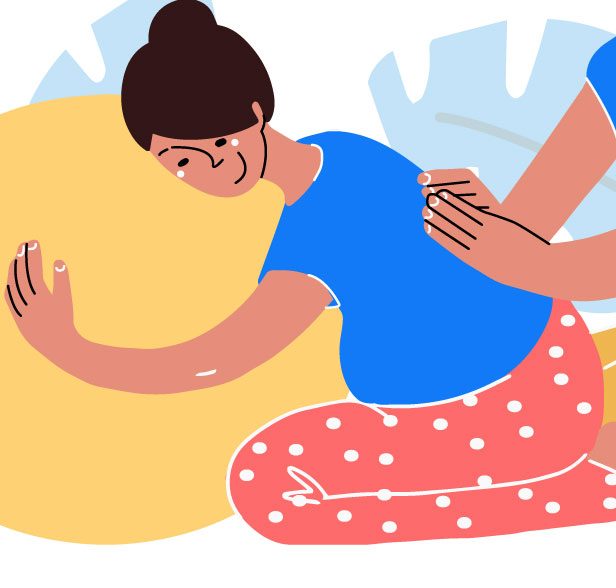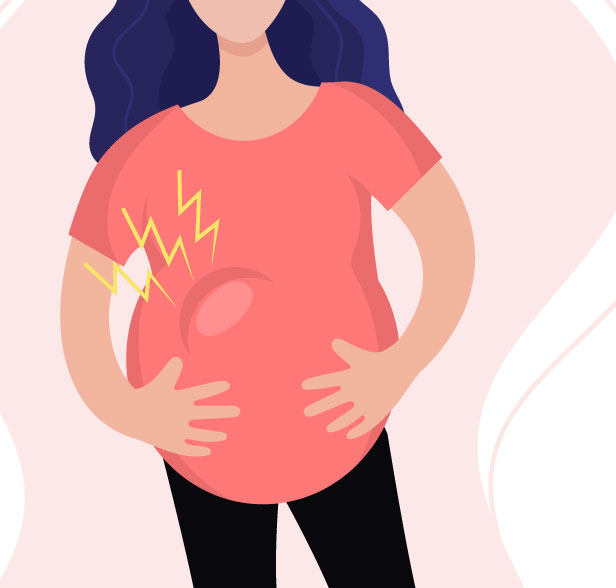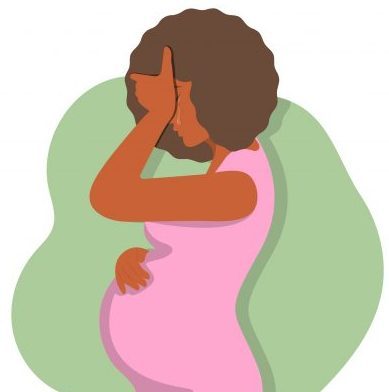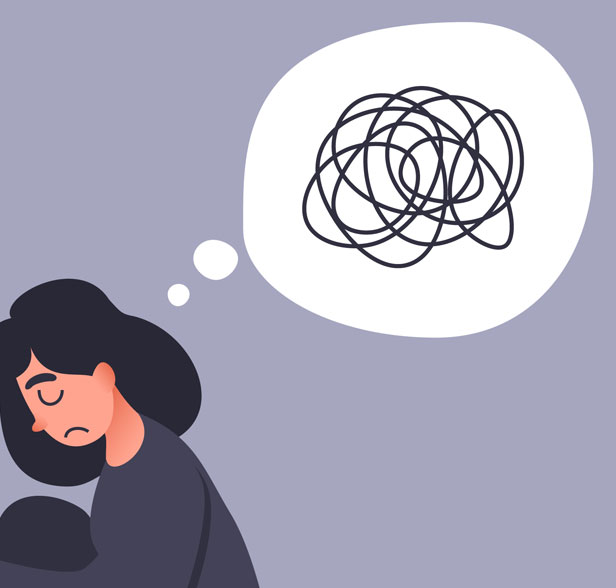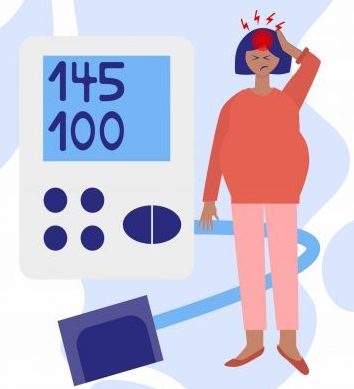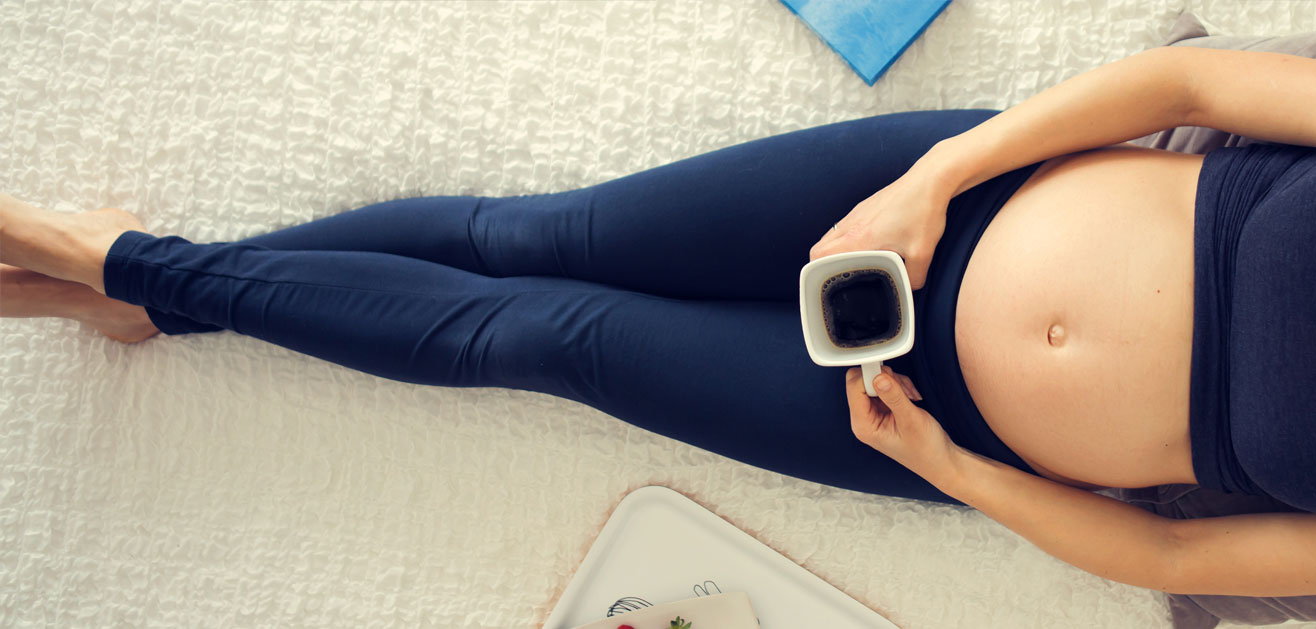
It’s estimated that 70-80% of pregnant people experience some degree of nausea and/or vomiting, and of those women, 1% experience a much more severe form of sickness called Hyperemesis Gravidarum (HG). Nausea and Vomiting can impact someone’s ability to care for younger children, to work, and to perform the usual activities of daily living. Additionally it can greatly impact mood and social functioning.
According to a 2015 Cochrane Review, many types of treatments have been explored for both “typical” nausea and vomiting and HG. The evidence is not conclusive or overwhelming for any of the treatments, including medications (1). This is not to say that none of the treatments are effective, it just means that more research is needed in order to make definitive conclusions.
For this research summary, I will describe the conclusions of two Cochrane Systematic Reviews; one looked at various treatments for nausea and vomiting in early pregnancy (1) and one looked at various treatments for hyperemesis gravidarum (HG) (2). A Cochrane Systematic Review is a high level research review that analyzes available studies on a particular topic.
A note on the safety of acupuncture in early pregnancy:
For more detailed information on this topic, please visit the “safety” page. One study (5) looked at the pregnancy outcomes of 593 women who had acupuncture in early pregnancy. No significant differences were found between those who had acupuncture, sham acupuncture or no acupuncture. This is just one more study which adds to the growing body of research which reassures us that acupuncture is safe during pregnancy (see the Safety page for more information).
Nausea and Vomiting of Early Pregnancy: Findings on Acupuncture and Acupressure
Acupressure Findings:
The 2015 Cochrane Review looked at 12 studies on acupressure point stimulation, most of which used a wrist band for stimulating an acupoint called Pericardium 6, located on the inner wrist. Researchers concluded that there was "some evidence regarding the effectiveness of P6 acupressure. There was also some evidence of the effectiveness of auricular acupressure, though further larger studies are required to confirm this.”
Acupuncture Findings:
Only two studies in the review looked at acupuncture for treating nausea and vomiting- which illustrates how little data the researchers had to work with. Although the Cochrane Review researchers concluded that “acupuncture (P6 or traditional) showed no significant benefit to women with nausea and vomiting in early pregnancy," one of the studies did show some improvements in the acupuncture group. More studies are needed to draw definitive conclusions.
Hyperemesis Gravidarum (HG): Findings on Acupuncture and Acupressure
Acupressure Findings:
This Cochrane review included 4 studies which examined acupressure on Pericardium 6 (a point on the inner wrist which is commonly used to address nausea). The studies utilized a variety of ways of stimulating this point, from an acupressure wrist band, to manually applied pressure, to a nerve-stimulating device. After analyzing the studies, the researchers concluded that there may be some benefit to acupressure at Pericardium 6 compared to placebo treatments. However, more studies of good quality are needed.
Acupuncture Findings:
This Cochrane review included 3 studies looking at acupuncture for treating HG symptoms. These three studies were all fairly small (ranging from 37 to 90 participants) and each study showed some significant issues in terms of the study design. The conclusions we do have are promising but further studies are needed.
- The first study (11) found that participants in the group receiving true acupuncture or acupressure to Pericardium 6 required fewer additional antiemetic (anti-vomiting) medications compared to the placebo group.
- The second study (12) compared those getting twice weekly acupuncture and acupressure to those taking medication. Both groups showed improvement, but the group taking medications improved more quickly. By the end of two weeks, the two groups had equal levels of nausea. This study showed that acupuncture and acupressure have potential to be an effective treatment option for people who would like to avoid or can not take anti-nausea medications.
- The third study (13) compared three groups: those having acupuncture, taking medication and taking an herbal formula. The group receiving acupuncture treatment had a greater reduction in symptoms than either the medication or herbal medicine group.

Morning Sickness or HG?
Typical nausea and vomiting of pregnancy, often called “morning sickness” can actually occur at any time of day and be constant or come and go. The severity varies greatly from person to person, but it is considered Hyperemesis Gravidarum (HG) when symptoms are much more severe, to the point of being debilitating. In HG, the pregnant person loses 5% or more of their pre-pregnancy weight and experiences severe dehydration (many times to the point of requiring IV hydration in the hospital). If left untreated, HG can pose a risk to the health of the pregnant person. For more information on HG, scroll down to the resources section.
What To Expect From Acupuncture:
A typical course of acupuncture for nausea/vomiting would start with 1-2 sessions per week, continuing until your symptoms have decreased to a level where you feel better more consistently and it is not impacting your work or daily activities to a significant degree. Your acupuncturist may teach you acupressure points to stimulate on yourself. For HG, your acupuncturist will likely recommend more frequent treatments and may be able to come to your home or the hospital. For either condition, your acupuncturist can suggest individualized ideas for changes in diet or lifestyle that may help your symptoms.
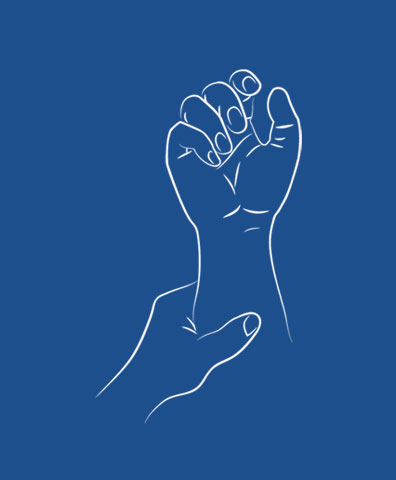
Resource Links
- HER- Hyperemesis Research
- Pregnancy Sickness Support International
- Hyperemesis Ireland
- Spewing Mummy
- BMJ Talk Medicine: Management of severe pregnancy sickness and Hyperemesis Gravidarum
- Royal College of Obstetricians and Gynecologists: Green Top Guide-line #69: The Management of Nausea and Vomiting of Pregnancy and Hyperemesis Gravidarum
Reliable Social Media Resources:
- Instagram: @pregnancysicknesssupport (pregnancysicknesssupport.org.uk)
- Instagram: @hgmoms (hyperemesis.org)
Sources
- Matthews A, Haas D, Mathuna D, Dowswell T. Interventions for nausea and vomiting in early pregnancy ( Review ). Cochrane Libr. 2015;(9):1–36.
- Boelig RC, Barton SJ, Saccone G, Kelly AJ, Edwards SJ, Berghella V. Interventions for treating hyperemesis gravidarum. Cochrane Database of Systematic Reviews 2016, Issue 5. Art. No.: CD010607. DOI: 10.1002/14651858.CD010607.pub2.
- Smith C, Crowther C, Beilby J. Acupuncture to treat nausea and vomiting in early pregnancy: a randomized controlled trial. Birth 2002;29(1):1-9.
- Knight B, Mudge C, Openshaw S, White A, Hart A. Effect of acupuncture on nausea of pregnancy: a randomized, controlled trial. Obstetrics & Gynecology 2001;97:184-8.
- Smith C, Crowther C, Beilby J. Pregnancy outcome following women’s participation in a randomised controlled trial of acupuncture to treat nausea and vomiting in early pregnancy. Complement Ther Med. 2002;10:78–83.
- Evaluation of outpatient acupuncture for relief of pregnancy related conditions. 2018, International Journal of Obstetrics and Gynecology. https://obgyn.onlinelibrary.wiley.com/doi/abs/10.1002/ijgo.12446
- Hutt Hospital: Hutt Maternity Acupuncture Policy. 2018. Retrieved from http://www.huttmaternity.org.nz/health-professionals/policies-guidelines/
- National Institute for Health and Care Excellence. (2008). Antenatal care: routine care for the healthy pregnant woman (NICE Clinical Guideline). Retrieved from https://www.nice.org.uk/guidance/cg62/evidence/full-guideline-pdf-196748323
- Van den Heuvel E, Goossens M, Vanderhaegen H, Sun HX, Buntinx F. Effect of acustimulation on nausea and vomiting and on hyperemesis in pregnancy: a systematic review of Western and Chinese literature. BMC Complement Altern Med. 2016 Jan 13;16:13.
- Boelig RC, Barton SJ, Saccone G, Kelly AJ, Edwards SJ, Berghella V. Interventions for treating hyperemesis gravidarum. Cochrane Database of Systematic Reviews 2016, Issue 5. Art. No.: CD010607. DOI: 10.1002/14651858.CD010607.pub2.
- Habek D, Barbir A, Habek JC, Janculiak D, Bobic-Vukovic M. Success of acupuncture and acupressure of the pc 6 acupoint in the treatment of hyperemesis gravidarum. Forschende Komplementarmedizin und Klassische Naturheilkunde 2004;11(1):20-3.
- Neri I, Allais G, Schiapparelli P, Blasi I, Benedetto C, Facchinetti F. Acupuncture versus pharmacological approach to reduce hyperemesis gravidarum discomfort. Minerva Ginecologica 2005;57(4):471-5.
- Mao ZN, Liang CE. Observation on the therapeutic effects of acupuncture on hyperemesis gravidarum. International Journal of Clinical Acupuncture 2010;19(2):60-5.

